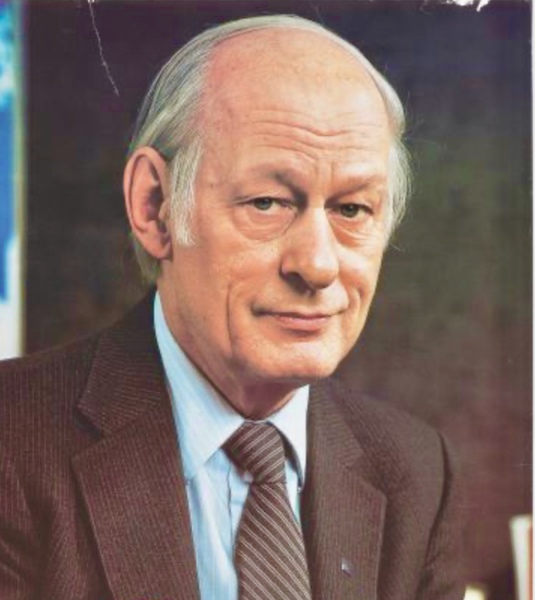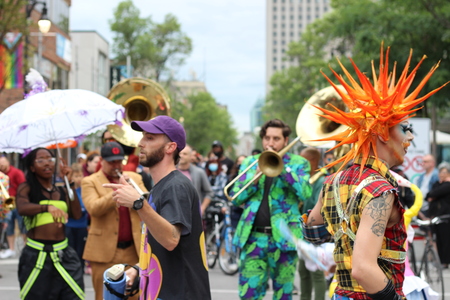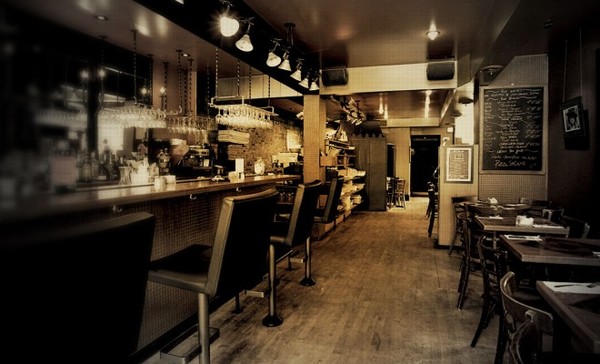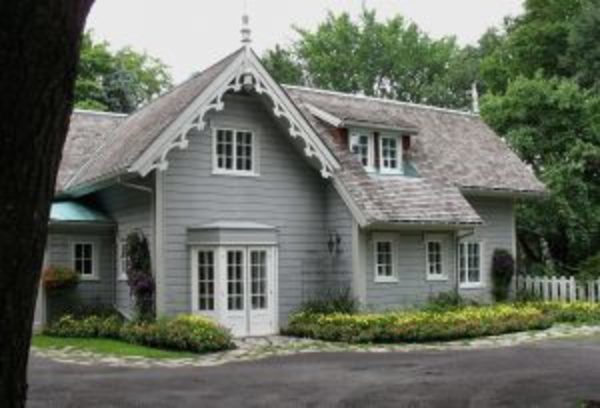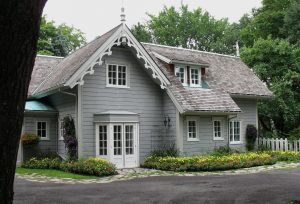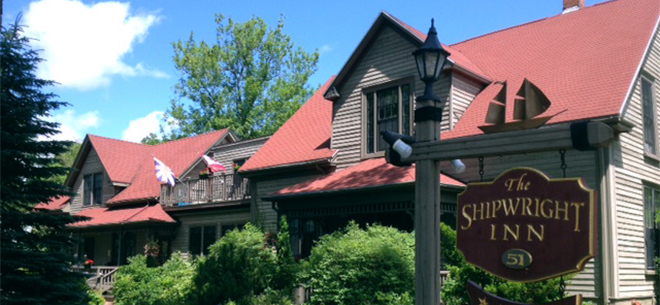The Musée national des Beaux-Arts in Québec City will be presenting this fall the long-awaited retrospective of the seminal Canadian artist Evergon, born Albert Jay Lunt in 1946 in Niagara Falls, Ontario. This major exhibition will span his entire career, from 1971 to the present, with a view to shedding contemporary light on the artist’s long-term output. More than 200 works will be assembled for the first time to highlight this colourful individual and his multifaceted work.
Evergon is regarded as a genuine cultural icon in Canada. He is an artistic and social pioneer who focuses on contemporary questions concerning cultural and body diversity and diversity of identity. For nearly 50 years, the artist’s career has centred on bold photographic, technological, and aesthetic research. His always moving and occasionally irreverent striking imagery is often an extension of classical painting. The simultaneously political and sensualistic nature of his work raises questions on sexual orientation. He revisits with rare vitality genres such as portraits, landscapes, or nudes. Through collages, the art of photocopy and an entire array of exploratory photographic approaches, including the Polaroid, Evergon deepens the terms of queer masculine and feminine identity, thereby shaking up fixed ideas.
Numerous striking works underpin Evergon’s career, in particular the immense colour Polaroids from the 1980s, for which he is internationally recognized. Critics and several artistic institutions in the world have also paid tribute to his award-winning work in holography. His series devoted to his mother Margaret renews the representation of the ageing body as few artists have done and has received widespread recognition. Evergon is an immense creative force: identity, body diversity, love, desire, and ageing are at the root of his work. Like death and life, it is the latter in all its facets that the artist celebrates. Evergon grafts on to life notions of autobiographical fiction and extimity, a revelation of the intimate in the public sphere that is common today but that he explored early in his career. The artist deems all his works to be love letters.
Evergon’s concerns encompass social and artistic issues that go beyond the body’s socially constructed limitations. He thus abandons clichés by representing atypical bodies and goes beyond the canons of standardized beauty while relying on the seductive powers of photography, capable of inventing fictional worlds or theatres as is true of another major series in his career, in which he imagines the life of an entire community, that of the characters the Ramboys. Evergon continues to be in perfect synchronicity with the emancipatory challenges of photography: he has forcefully called into question the notion of the author by creating various alter egos. He disrupts the foundations of the photographic image through an astonishing baroque aesthetic and brushes aside the conventional canons of beauty by representing atypical bodies that he invests with panache.
Travel log
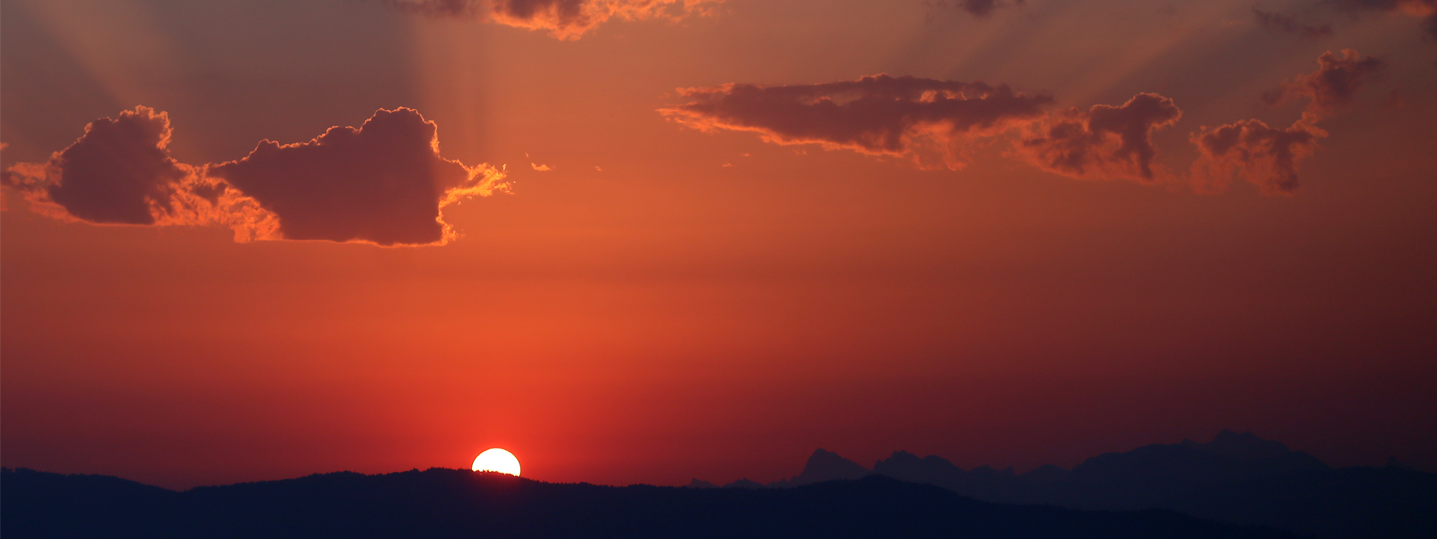
Archive for 2022
In the estuary of the Restigouche River, at the end of Chaleur Bay, lies the national historic site of the Battle of the Restigouche, 3 km west of the municipality of Pointe-à-la-Croix. This historic site commemorates the last naval battle of the Seven Years' War between the French and English for possession of New France…
But it was also near this site, to the east of Pointe-à-la-Croix, that over a thousand Acadians fleeing deportation took refuge, in what was called in 1758 the village of Petite-Rochelle. At the time of the fall of Quebec in September 1759, the village was only defended by a fortified post and a handful of soldiers. Under the English threat, this Acadian refuge was nevertheless the last French bastion to capitulate. Here's why…
The last naval battle
At the end of May 1760, the Petite-Rochelle post received unexpected aid. The winter had been harsh, and the population had suffered greatly from famine. A French flotilla commanded by Lieutenant François Chenard de La Giraudais took refuge at the end of Chaleur Bay. Comprising the frigate Le Machault and two supply ships loaded to aid Canada, they had preferred to avoid encountering a larger English fleet that preceded them at the entrance of the Saint Lawrence River. On June 27, the three French ships were trapped by an English fleet of five warships commanded by Captain John Byron, who engaged in battle. The defense of the Petite-Rochelle post, however, was organized and supported by Acadian militiamen and Mi'kmaq warriors. François-Gabriel d’Anjeac, captain of the troops aboard the French ships, had taken command of the post and directed the construction of a battery and a guard post at Pointe-à-la-Garde (east of Pointe-à-la-Croix). This battery caused real damage to the English and delayed their progression towards the French ships. But the fight was uneven…
Estuary of the Restigouche River and Van Horne Bridge
Estuary of the Restigouche River and Van Horne Bridge connecting Campbellton to Pointe-à-la-Croix, viewed from Sugarloaf Mountain, New Brunswick. It is here that remains of the Machault still lie at the bottom of the river (author Blob5825, unmodified, license CC BY 1.0)
On July 8, at the end of a fierce battle, La Giraudais scuttled his ships to prevent the English from seizing the supplies and weapons. Quickly, Captain d’Anjeac led the retreat of his troops into the woods. However, the English fleet preferred to withdraw. Thus ended the battle of the Restigouche. The English had burned all the houses they found on the shore. The disaster was total. D’Anjeac still managed to organize the resistance of the Petite-Rochelle post, which still sheltered a thousand Acadian refugees. It was in vain… The French troops had to lay down their arms on October 30, after the capitulation of Montreal. The Acadians were left in place, plunged into great uncertainty, which did not prevent the Acadian privateers from continuing a relentless privateering war against the English boats. Several families had still managed to flee along Chaleur Bay and had founded the village of... Bonaventure.
This August 24, 2022, marks the 100th anniversary of the birth of René Lévesque, former Premier of Quebec, undoubtedly the most prominent figure in contemporary Quebec history and the most eminent son of Gaspésie.
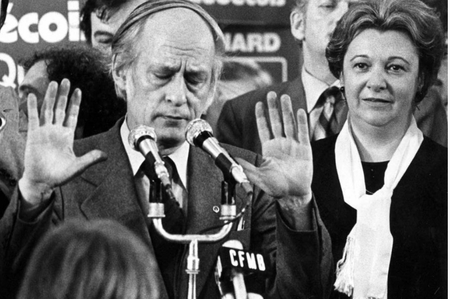
Among the significant reforms of his government, the LGBT community owes him a great deal for making a major step when sexual orientation was added as a prohibited ground for discrimination to the Quebec Charter of Human Rights and Freedoms in 1977, a commitment of his party when it was in opposition at the time of its adoption in 1975. Quebec then became the 2nd legislature in the world to ban this discrimination, and this advancement would pave the way for access to equality and make Quebec one of the most welcoming nations in the world for LGBT people.
Born in Campbellton on August 24, 1922, René Lévesque grew up in New Carlisle before continuing his studies in Gaspé and Quebec City. When he dropped out of law school, he turned to radio. Bilingual, he was recruited as a war correspondent by the American army in 1944-45, an experience that deeply impacted him as one of the first correspondents to discover the horrors of the Nazi concentration camps. He then distinguished himself as a journalist in the 1950s, notably for his work on the program "Point de mire". Elected as a Liberal deputy in 1960, he became one of the main architects of the Quiet Revolution.
He was entrusted with the portfolios of Public Works, Hydraulic Resources, and then Natural Resources. He used this position to pilot the electricity nationalization issue at the heart of the 1962 elections. After leaving the Liberal Party, he founded the Sovereignty-Association Movement, and then the Parti Québécois (PQ) in 1968, seeing the political sovereignty of the Quebec people as the natural culmination of the Quiet Revolution. After two defeats in 1970 and 1973, the victory of November 15, 1976, allowed him to form the first PQ government.
A year after rejecting his sovereignty-association project in May 1980, Quebecers returned René Lévesque and the PQ to power in April 1981. He left active politics in 1985. The interest in his memoirs and the reactions to his death in 1987 reflect his unique place in contemporary Quebec history.
Throughout 2022-2023, various events will highlight the centenary of René Lévesque. Those who wish to learn about or remember the unique journey of this significant Premier in Quebec's history should not miss visiting the René-Lévesque Space in his native village of New Carlisle.
For its 23rd edition, the Mtl en Arts festival is back in force, with a few improvements. From June 29 to July 3, the festival will bring together a hundred of artists from various disciplines as well as many artistic activities : exhibitions, live creations, parades and conferences.
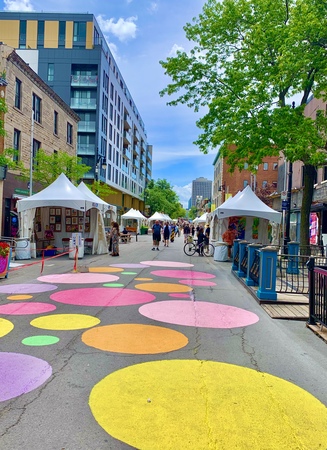
This year, the festival will mostly take part in the eastern part of the Village, between Beaudry and Papineau streets, which will encourage a better synergy between the artists and the public, as well as a friendly atmosphere.
« What a pleasure to be back this year with a new edition, highlighting diversity in all its forms », says Stéphane Mabilais, general manager of the festival.
Diversity at the core of the festival
More than ever, it was important for the organizers of the festival to promote diversity through the programming, whether in terms of culture or gender. This year, about 20% of the artists are coming from diverse backgrounds.
Moreover, a new activity is introduced this year: the "station des artistes" conferences. Hosted by a drag queen, there will be three conferences per day where the artists will be presented. In addition, throughout the festival, artists from the Afro Museum will be on site for an exhibition and to lead creative art workshops for teenagers and children.
As part of the "L'art qui redonne" project, LGBTQ2S+ artists Nikki Küntzle (she/they) and Enok (they/them) will create large-scale temporary murals inspired by the mission of ATQ (Aide aux Trans du Québec). Reproductions of these works will be sold in support of the organization.
Studio ZX's festive parade under the theme of diversity will parade down St. Catherine street. Even bigger than last year, stilt walkers, jugglers, dancers and others will be there to entertain the public. Festival-goers are also invited to participate in the parade by showcasing their colors.
Animations for every taste and age
Between Beaudry and Papineau streets, many other moving and still animations will be offered :
• L'expo-vente : an exhibition bringing together approximately forthy visual artists to celebrate local creativity, the richness of diversity and the dynamism of the next generation.
• L’art mobile : creation of large format artworks on a wheeled mobile support.
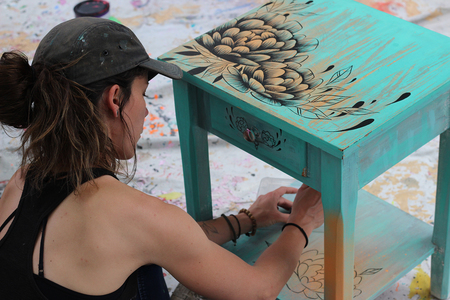
• Ça déménage : artists Raphaël Dairon and MC Baldassari will give a second life to used furniture by transforming it into unique works of art. This creative and eco-responsible project is possible thanks to the festival's partners, Recyc-Québec and Desjardins.
• Murale collective : under the inspiration of the artist Dalkhafine, the public will be invited to paint a giant mural with the help of the colours indicated. The result will be a beautiful collective work of art.
Animations for every taste and age
Between Beaudry and Papineau streets, many other moving and still animations will be offered :
• L'expo-vente : an exhibition bringing together approximately forthy visual artists to celebrate local creativity, the richness of diversity and the dynamism of the next generation.
• L’art mobile : creation of large format artworks on a wheeled mobile support.
• Ça déménage : artists Raphaël Dairon and MC Baldassari will give a second life to used furniture by transforming it into unique works of art. This creative and eco-responsible project is possible thanks to the festival's partners, Recyc-Québec and Desjardins.
• Murale collective : under the inspiration of the artist Dalkhafine, the public will be invited to paint a giant mural with the help of the colours indicated. The result will be a beautiful collective work of art.
A plant-filled park with a gleaming thunderhead sculpture at its centre is the winning design for a new monument in Ottawa to honour victims of its LGBTQ2+ purge. The LGBTQ2+ National Monument is a partnership between the federal government and the LGBT Purge Fund, which was created from the settlement of a class-action lawsuit against the government. That lawsuit was born from the so-called gay purge, during which several thousand Canadians were investigated, sanctioned and sometimes fired between 1955 and 1996.
The executive director of the purge fund, Michelle Douglas, announced Wednesday that Team Wreford's design won the competition. The monument will feature a mirrored thunderhead cloud inside a large column, with a stage outside for performances and protests, and space inside the thunderhead for more intimate events.
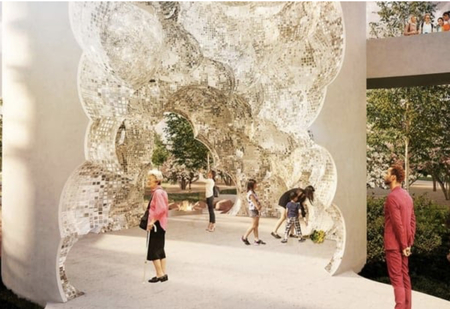
A view of the inside of the monument, which can host intimate events such as vigils. (Team Wreford)
"Our design embodies the strength, activism and hope of the LGBTQ2+ community, and is a lasting testimony to the courage and humanity of those who were harmed by the purge, homophobic and transphobic laws and norms, and Canada's colonial history," the design winners, Team Wreford, said in their pitch. "It rises up as our community has risen up to say, 'We demand change.'"
The area around the monument will feature an orchard, medicinal garden, a healing circle with stones chosen by two-spirit Indigenous elders and a path tracing LGBTQ2+ history in Canada, according to the proposal. The monument is scheduled to be completed in 2025.
Team Wreford pitched the thunderhead as a symbol of a community rising up to demand change. (Team Wreford/Government of Canada)
Team Wreford is tied to Winnipeg. Architects Public City Inc. are based there, as are visual artists Shawna Dempsey and Lorri Millan. Advisor Albert McLeod lives there and has family history in Manitoba's Nisichawayasihk Cree Nation and Norway House Métis community.

The monument will stand in a grassy area on the Ottawa end of the Portage Bridge, which connects Ontario and Quebec over the Ottawa River, just west of Parliament Hill. The winning design was chosen from a pool of five potential designs that had been released in November 2021 for public feedback. Besides the central thunderhead sculpture, the winning design has a path tracing LGBTQ2+ history and a healing circle made of stones chosen by two-spirit Indigenous elders. (Team Wreford/Government of Canada)
The exhibition JJ Levine: Queer Photographs invites you to discover the work of Montreal photographer JJ Levine via a selection of portraits drawn from three different series. In staged photographs of queer subjects in intimate, domestic settings, Levine questions the representation of traditional binary gender roles. Composed of 52 large format photographs, including several that have never been exhibited, the compelling exhibition is complemented by a video illustrating the artist’s creative process. Actually a retrospective of Levine’s portraiture work that he began in 2006, it borrows from the studio portrait tradition to celebrate people who self-identify as queer.

THREE PORTRAIT SERIES
Queer Portraits, started in 2006, is composed of portraits of individuals, couples and children chosen by the artist from among his queer friends. Veritable mises en scène of daily life, these photographs, usually taken in the models’ homes, aim to define the personal identity of the subjects. The artist considers this ongoing series a “life project.”
Alone Time depicts heterosexual couples sharing intimate moments, primarily in domestic settings. However, each couple is in fact composed of only one model playing both the male and female characters. To construct these portraits, the artist layers several different negatives together. This ongoing project began in 2007.
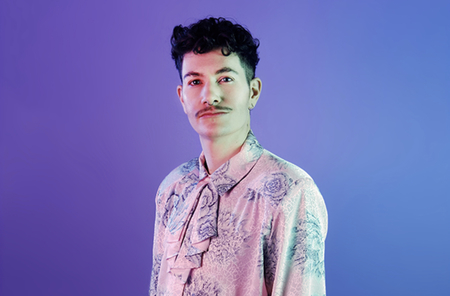 Jj Levine Queer photographs
Jj Levine Queer photographs
At first glance, Switch appears to be a series of portraits of heterosexual couples dressed up for a special occasion, like a prom. However, upon closer inspection, it becomes clear that each diptych is composed of two people rather than four. Each model is dressed as a man in one photo and as a woman in the adjacent one. This project was completed in 2009.
JJ LEVINEJJ Levine is an images-based artist living and working in Tiohti:áke/Montreal known for his compelling body of work in portraiture. Levine holds a Masters of Fine Arts in Photography from Concordia University. He is currently represented by ELLEPHANT Gallery (Montreal), and his work has been exhibited at museums, galleries, and art festivals in Canada, the United States, Mexico, as well as numerous European countries. His artwork and writing have been published in academic journals, including Photography and Culture (UK). Levine’s images have also been featured in art magazines and newspapers internationally, such as CV Photo (Canada), Esse (Canada), Slate (US), The Guardian Observer (UK and US), and Society (France).Levine was a finalist for the Prix Découverte Louis Roederer in 2019 at the Rencontres d’Arles photography festival (France). In 2015, Levine self-published two artist books: Queer Portraits: 2006- 2015 and Switch. Levine’s artistic practice balances a radical queer agenda with a strong formal aesthetic.

Trendy locals appreciate their impressive wine list and often drop by for a drink after work, or to dine on one of their many gourmet pizzas. Originality and flavour are on the menu here. Piz’za-za has an urban decor, with brick, wood and mirrors, centering on their impressive bar and open view of the kitchen. It’s on the second floor that we find the pièce de résistance, their large glass wine cellar that would make any oenophile drool. During the summer months, you’ll want to check out their lovely back patio.

The restaurant staff is remarkably friendly and quick, creating a welcoming and inviting atmosphere. Employees receive regular courses on the wines offered in the restaurant to improve their service. The menu has many charms, for example, their tomato gratin with brie and raclette cheese made with Griffon beer. Bold, simple, and exquisite. The pizzas are delicious and made with fresh ingredients like fennel, fig, mango and smoked trout, and their salads and pastas are colourful and fresh. Every season, the chef makes up a new menu inspired by seasonal local ingredients.
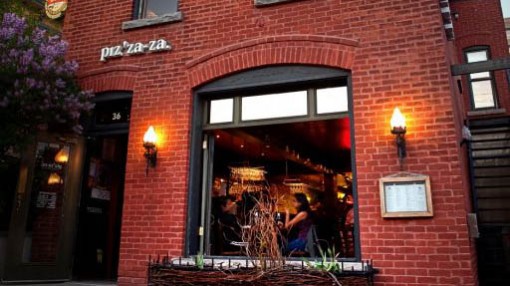
The restaurant also offers wine tastings hosted by oenologist Richard Charbonneau. With varying themes, these workshops are a fantastic way to discover the diversity of wines while savouring a succulent meal.
Piz’za-za is definitely worth the detour. Thanks to its proximity to Canada`s capital, it is common for locals and tourists to cross the river for some good food, good wine, all at a reasonable price. To view their menu or find out about their wine tastings, visit their website at www.pizzaza.ca
Piz’za-za Restau Bar à vin 36, rue Laval Gatineau, Québec [email protected] www.pizzaza.ca
Sillery, Sainte-Foy and Cap-Rouge have the reputation of being the more affluent neighborhoods of the capital. This area is home of the main campus of Université Laval, the oldest francophone higher education establishment in America, where the first LGTBQ organization in the capital, the Groupe gai de l’Université Laval, first appeared.
Whether arriving in Québec from the south shore using the highway or the Chemin du Roy, or coming in from the international airport, one inevitably crosses this district before accessing downtown Québec. There are also many hotels in the vicinity of the bridges, especially along Laurier Boulevard. This might be the more practical choices for those coming into the city by car, as the old narrow streets of Old Québec where obviously conceived for horse-drawn carriages and pedestrians, not cars. Shoppers will appreciate the proximity of the shopping malls also found on Laurier Boulevard.
Coming over the bridges from this district, you should visit the Promenade Samuel –De-Champlain park along the river, which was inaugurated in 2008 for the 400th anniversary of the city. Whether arriving by foot, bike or car, the promenade offers a spectacular view of the city and leads right into historic Old Québec. This is a great way to connect with a natural environment in the heart of the city.
Sillery is certainly the most affluent neighborhood of the capital. Its trendiest street, Maguire Avenue, is an area especially appreciated by our community, offering quaint boutiques, with good restaurants and nice terraces. It also features one of the most remarkable parks in the city, Spencer Wood, which became a showcase for horticulture in North America through the efforts of its owner, Henry Atkinson. For nearly 20 years, the governor-generals of United Canada lived on the property, which was purchased by the Québec government in 1870 and served as the residence of Québec lieutenant-governors until 1966. A major fire eventually destroyed the main residence. Visit the gorgeous park by the Saint Lawrence River, the beautiful gardens and relics of the site's long history.
Villa Bagatelle, with its distinctive irregular forms and ornamentations, was built in the picturesque English architectural style of the 19th century. The cultural centre hosts temporary art and history exhibitions. The Villa is also renowned for its garden where you can admire many native plants and a range of underbrush species.
Also noteworthy is the Aquarium du Québec, with its gardens and outdoor tanks, and a main building featuring many exhibition spaces. The venue includes nearly 10 000 specimens representing 300 species of mammals, indigenous and exotic fish, invertebrates, amphibians and reptiles. Watch marine mammals, such as polar bears, walruses and several seal species, frolic in the outdoor park. Many animals from the Pacific Ocean swim in our huge 350 000-litre tank. The area overlooks the Saint Lawrence River from atop a cliff, an excellent way of discovering these faraway regions.
The Award-Winning 5 Star Shipwright Inn B&B, located in Olde Charlottetown, PEI, “The Gentle Island”, has been rated as the “Best Bed and Breakfast on Prince Edward Island” and one of the “Top Ten B and B’s” in Canada by Frommer’s Travel Guides and is AAA/CAA 3 Diamond approved. We offer warm, Island hospitality and attentive service.
Our accommodation is well appointed but not intimidating and has all the benefits of an hotel and so much more. Quiet and safe. Convenient location, walk to everything in town — fine dining, shopping, the boardwalk, waterfront activities and the Confederation Centre of the Arts. Walking and biking trails nearby.
We provide off street parking and a smoke free home. There are 30-plus courses here (starting only a matter of minutes away) so, given PEI’s small size, you can play a round and still have plenty of time for touring, dining, beaches, Anne of Green Gables attractions, lighthouses, seal watching, Provincial and National Parks, heritage roads, historic villages, antique and craft shopping.
RSS Feed
SubscribeCategories
Tags
Latest Posts
- Evergon. Theatres of the Intimate
- Seven Years' War between the French and English for possession of New France
- René Lévesque
- A Celebration of Visual Arts
- WINNING DESIGN UNVEILED
- QUEER PHOTOGRAPHS
- Piz’za-za: Fine wines and gourmet food in Vieux-Hull
- CLASSY HAUTE-VILLE
- Shipwright Inn


